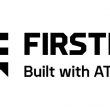IWCE: WiMAX expected to blossom overseas first
LAS VEGAS–WiMAX is a promising wireless broadband standard, but it may be some time before the technology flourishes in the United States, a speaker said during an IWCE College of Technology session yesterday.
Most existing WiMAX gear is designed to provide fixed broadband service, which has limited business potential in the largely wired U.S. market. However, in parts of the world where landline, cable and fiber connections are scarce, WiMAX will be welcome, said Karl Edwards, president of Excelsio Communications.
“The top market opportunities are outside the U.S., in places like Russia, Africa and India where the majority of homes do not have dialup access,” Edwards said.
WiMAX prospects in the United States should improve greatly with the certification of equipment meeting the standard for 802.16e, or mobile WiMAX. Utilizing licensed spectrum, WiMAX provides greater coverage range and effective data throughput than Wi-Fi networks, Edwards said. In addition, WiMAX provides quality of service and prioritization that is not available in contention-based Wi-Fi networks.
However, those assessing the technology should be wary of hype claiming that WiMAX enables a range of 30 miles and speeds of 70 MB/s, Edwards said.
“Those are mutually exclusive [characteristics],” he said. “You’re going to get one or the other, not both.”
Exactly what network operators will get with WiMAX is still being determined, as the technology is still in its infancy and equipment for mobile solutions—particularly subscriber devices—is expected to reach the market later this year, Edwards said.
WiMAX deployments by service providers Sprint Nextel and Clearwire likely will dictate the adoption of the technology in the U.S. The two carriers have announced aggressive plans to build networks using the fledgling technology.
One announced Clearwire market is Grand Rapids, Mich., where Excelsio served as a consultant to the city in pursuing a wireless broadband network that will not require taxpayer money to build, Edwards said. Grand Rapids will provide Clearwire with locations for base-station sites, access to spectrum and the promise of the city serving as an “anchor tenant” for the network.
Such a public-private partnership should be pursued only after it is clear that the endeavor promises to be an economic success—something governmental entities need to review on a periodic basis, Edwards said.
“Make sure that this will be profitable for the service provider and that you get what you need out of the deal,” he said.
Partnering is critical on the spectrum front, as well. U.S. WiMAX deployments are expected to be concentrated in the 2.5 GHz band, where Sprint Nextel and Clearwire clearly are the dominant commercial spectrum holders in the 2.5 GHz band, where WiMAX is being deployed first in the U.S.
While these two carriers’ spectrum holdings limit the WiMAX opportunity in the U.S., airwaves remain available in the band. Educational entities are the licensees for much of the 2.5 GHz spectrum, but the FCC has passed rules allowing them to lease the frequencies to commercial entities. If rights to use this spectrum can be secured at a reasonable price, WiMAX is significantly cheaper to deploy than Wi-Fi, which requires many more sites to be built to provide similar coverage, Edwards said.
Edwards declined to speculate whether winners of the 700 MHz auction that is scheduled to be conducted by the end of January 2008 would want to build WiMAX networks using the spectrum.

















